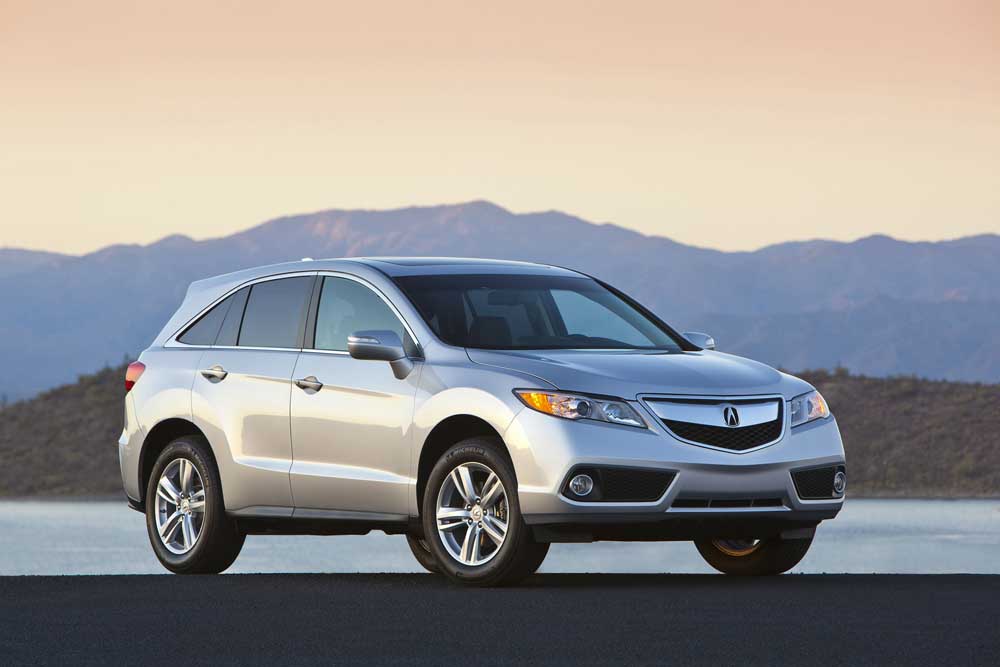RDX is a comfy kid-hauler
Published 12:00 am Sunday, January 18, 2015

- Submitted photoThe 2015 Acura RDX offers a number of upscale touches at a competitive price.
Now in its third year since a complete redesign, the 2015 Acura RDX compact crossover continues as an upscale family hauler that’s not much more expensive than some nonpremium competitors.
Acura aimed the RDX at young professional couples with no kids, and also at empty-nester baby boomers looking to downsize a bit from the bigger SUVs they needed when all the kids were at home.
Trending
For 2015, RDX prices begin at $34,895 (plus $895 freight) for the front-wheel-drive version, and $36,295 with all-wheel drive. With the Technology package, the front-drive model is $38,595, and the all-wheel-drive $39,995.
The RDX is in the entry-premium SUV segment, competing against vehicles such as the Audi Q5, BMW X3, Infiniti QX50, Mercedes-Benz GLK350, Volkswagen Tiguan and Volvo XC60.
Even with gasoline prices down dramatically in recent weeks, sales of these compact crossovers, including premium models, are still climbing as consumers look for smaller vehicles with better fuel economy. Buyers in this class are looking for more of everything, including fuel economy, luxury and performance — but in smaller packages.
Introduced originally for 2007, the five-passenger RDX is based on the architecture of Honda’s popular CR-V compact crossover, which got its own slight makeover for 2015.
The RDX’s biggest difference from the CR-V is under the hood. While the Honda comes with a four-cylinder engine, the RDX is offered only with a pleasingly peppy V-6. Gone is the previous model’s turbocharged four-cylinder, but fuel economy was increased from the previous generation.
For 2015, the front-drive model has EPA ratings of 20 mpg city, 28 highway and 23 mpg combined; with all-wheel drive, the numbers are 19/27/22.
Trending
The 3.5-liter engine is rated at 273 horsepower and 251 foot-pounds of torque, and is paired with a six-speed automatic transmission with manual-shift feature, activated by paddles behind each side of the steering wheel.
This RDX has a much more luxurious interior than that of the CR-V, with standard leather upholstery and other amenities that clearly put the vehicle in the premium class. The cabin also is much quieter than before, thanks to better insulation and Active Noise Control technology — similar to those noise-cancelling headphones people wear on airplanes.
The vehicle also has larger door openings, more passenger and cargo space, and new features such as an optional power-operated tailgate, which makes it much easier to open and close when your hands are full.
As with most vehicles Honda aims at families, the RDX has lots of interior conveniences that make trips easy on everyone.
We enjoyed the various storage spaces included in the car, especially the compartment at the front of the center console, with a sliding cover, perfect for tucking away phones and iPods. It even includes two 12-volt power outlets and a USB port, keeping charging cords and such tucked away. The lid can be closed to keep the devices out of view when the car is parked.
Among the RDX safety features is Honda’s Advanced Compatibility Engineering — ACE — body and frame structure, which helps protect occupants and other motorists (and even pedestrians) involved in an accident with the RDX.
Standard are front seat-mounted side air bags, front and rear roof-mounted side-curtain air bags, driver and front-passenger knee bolsters, four-wheel antilock disc brakes, and electronic stability control with traction control.
Riding in comfort
Both front bucket seats are heated and have perforated leather surfaces. The leather-wrapped steering wheel has tilt and telescopic adjustments.
Dash gauges are backlit with LEDs, and there is a driver-information display in the instrument panel. A rearview camera system is standard, with three viewing modes.
Also included are dual-zone automatic climate control; power moon roof; a seven-speaker premium audio system with CD player and XM satellite radio, as well as an auxiliary input jack and USB port (supporting iPods and iPhones); and Bluetooth phone and audio streaming, with iPod support.
The power door locks include keyless access, and pushbutton start is standard. The rear seatback has a 60/40 split-folding feature to allow for expansion of the cargo area, which has 26.1 cubic feet of space with the rear seat in place.
Those front seats are quite comfortable, and even the rear seat offered plenty of legroom, although the center position, as in most vehicles, probably should be left to smaller people or a child safety seat.
A fold-down armrest is provided in the middle of the rear seat for use when no one is sitting there, and it has two cupholders.
The RDX’s ride is softer than that of the previous model, but the trade-off is that this one doesn’t handle as crisply. It’s meant more for comfort than performance, which is what most buyers probably are looking for in this class.
Still, it’s a very good vehicle that does what it’s intended to do: haul people and kids around in comfort, in a smaller, more-fuel-efficient package that’s easy to negotiate through traffic and crowded mall parking lots.








